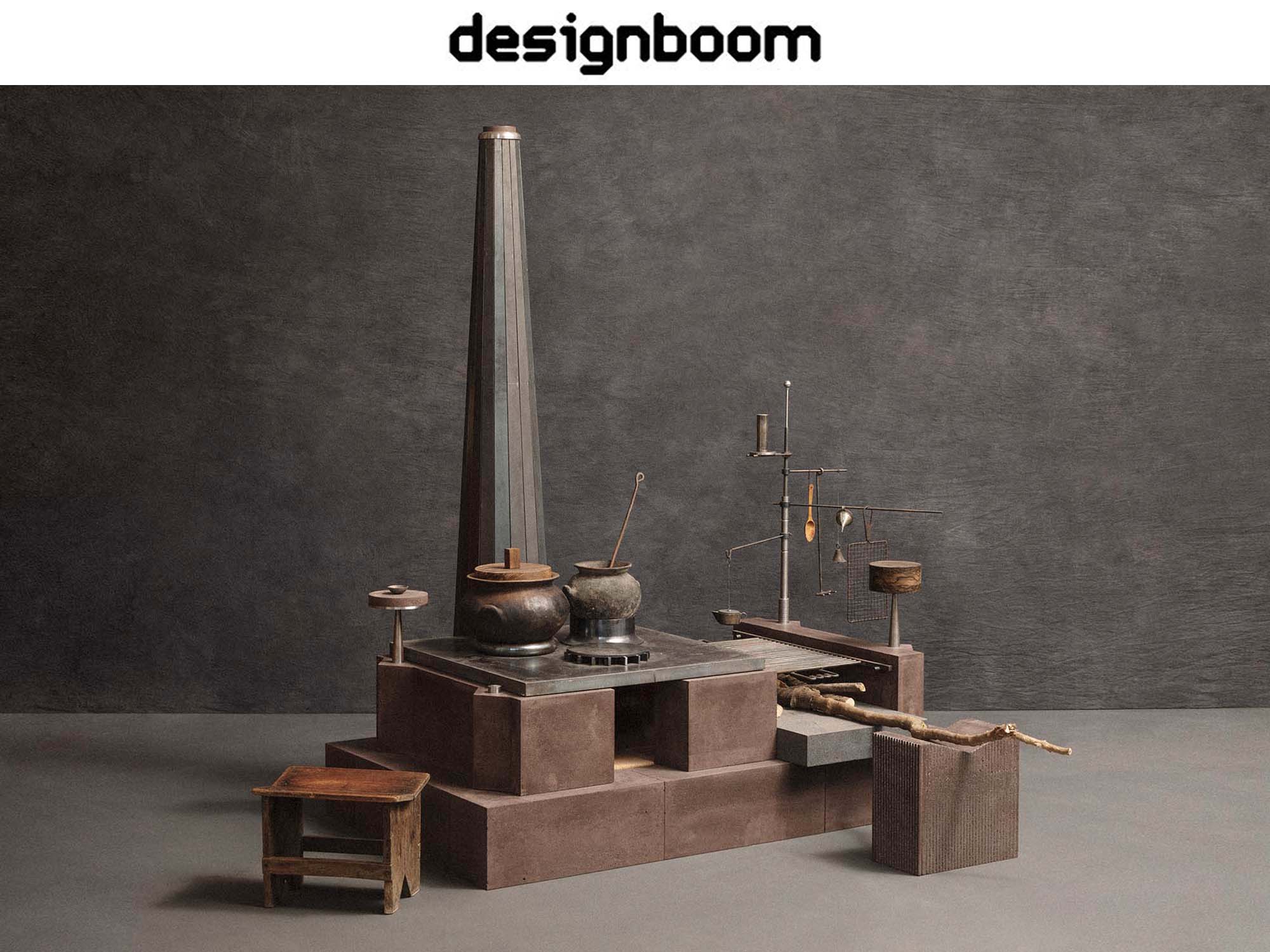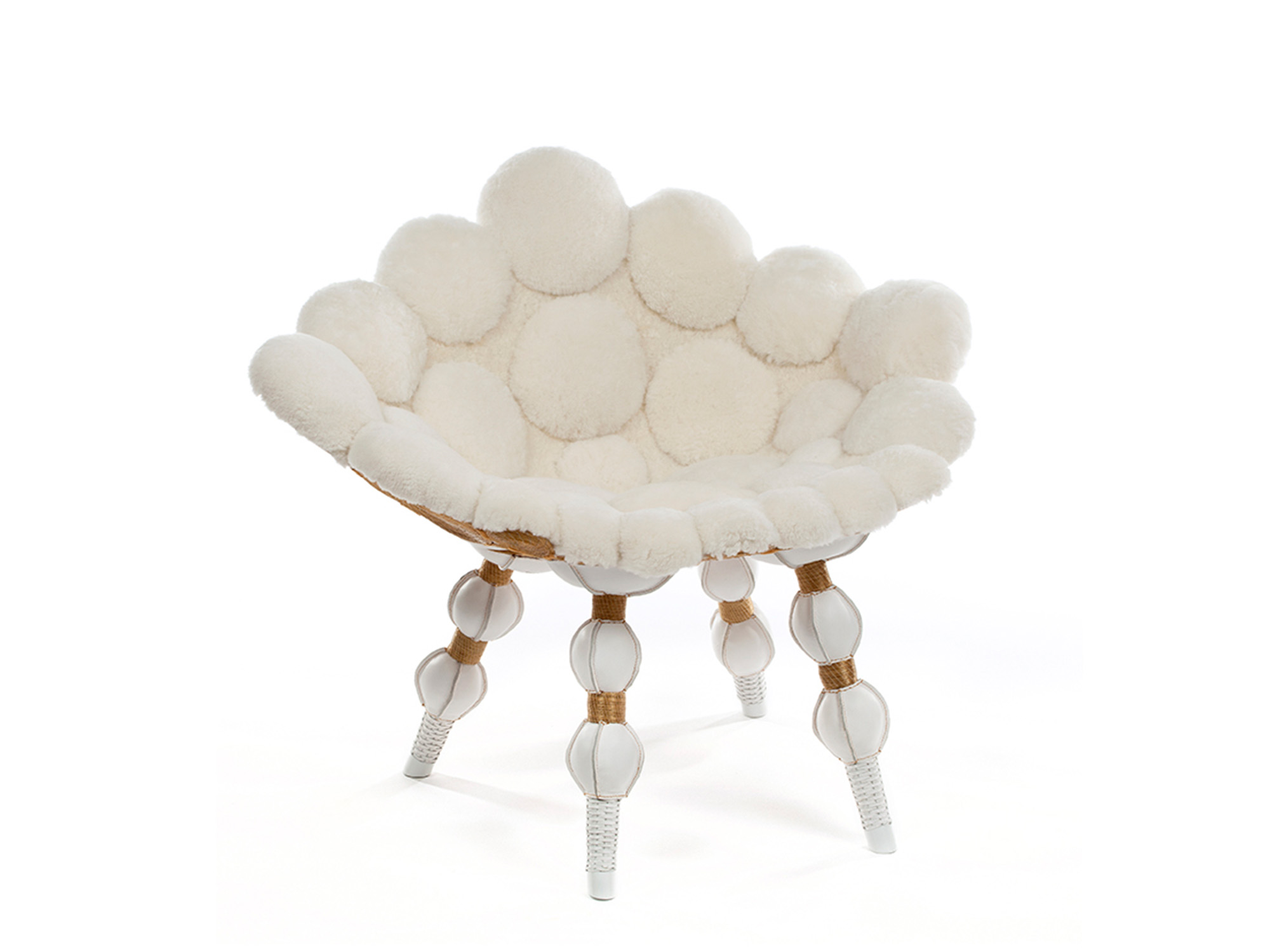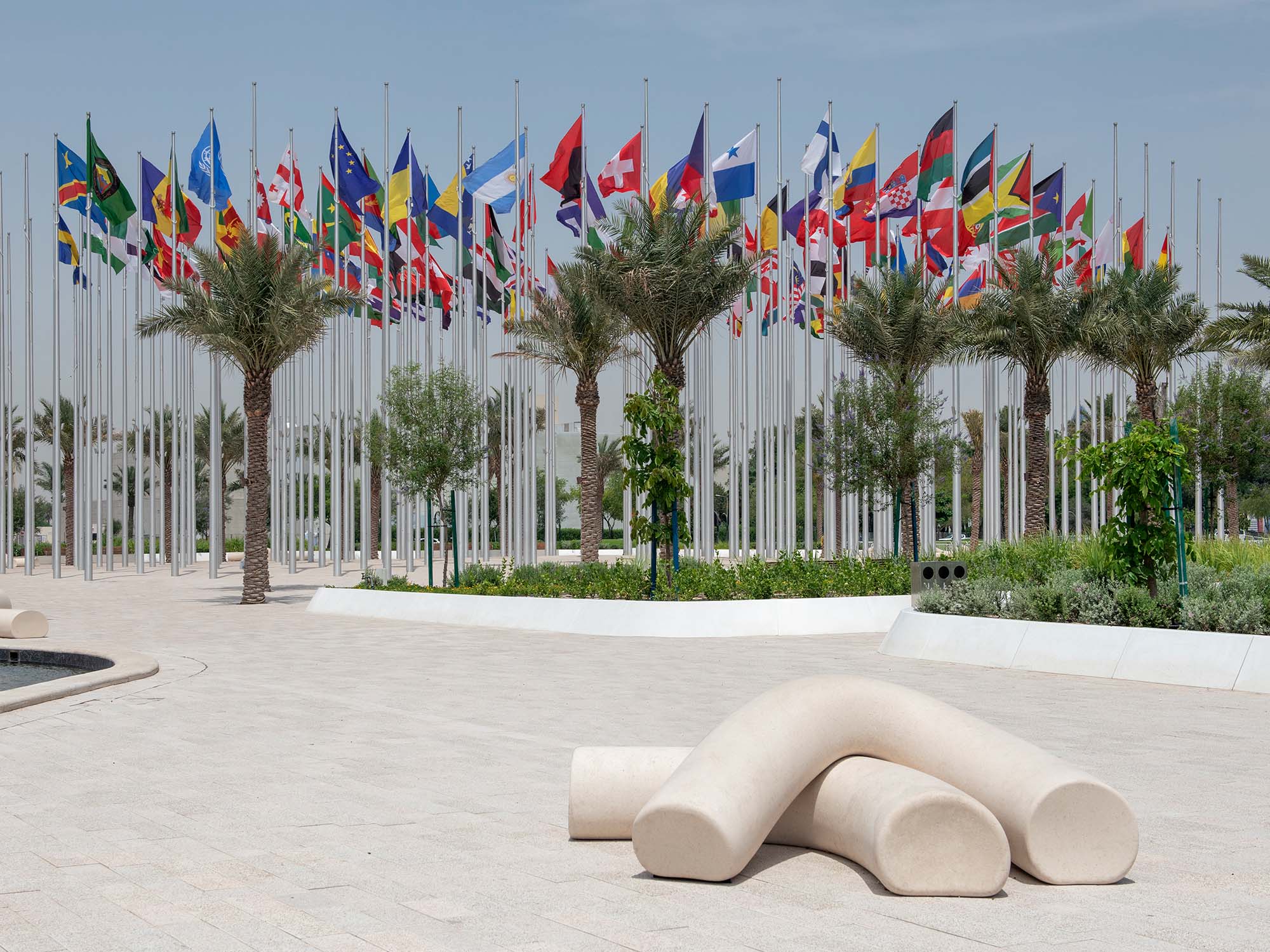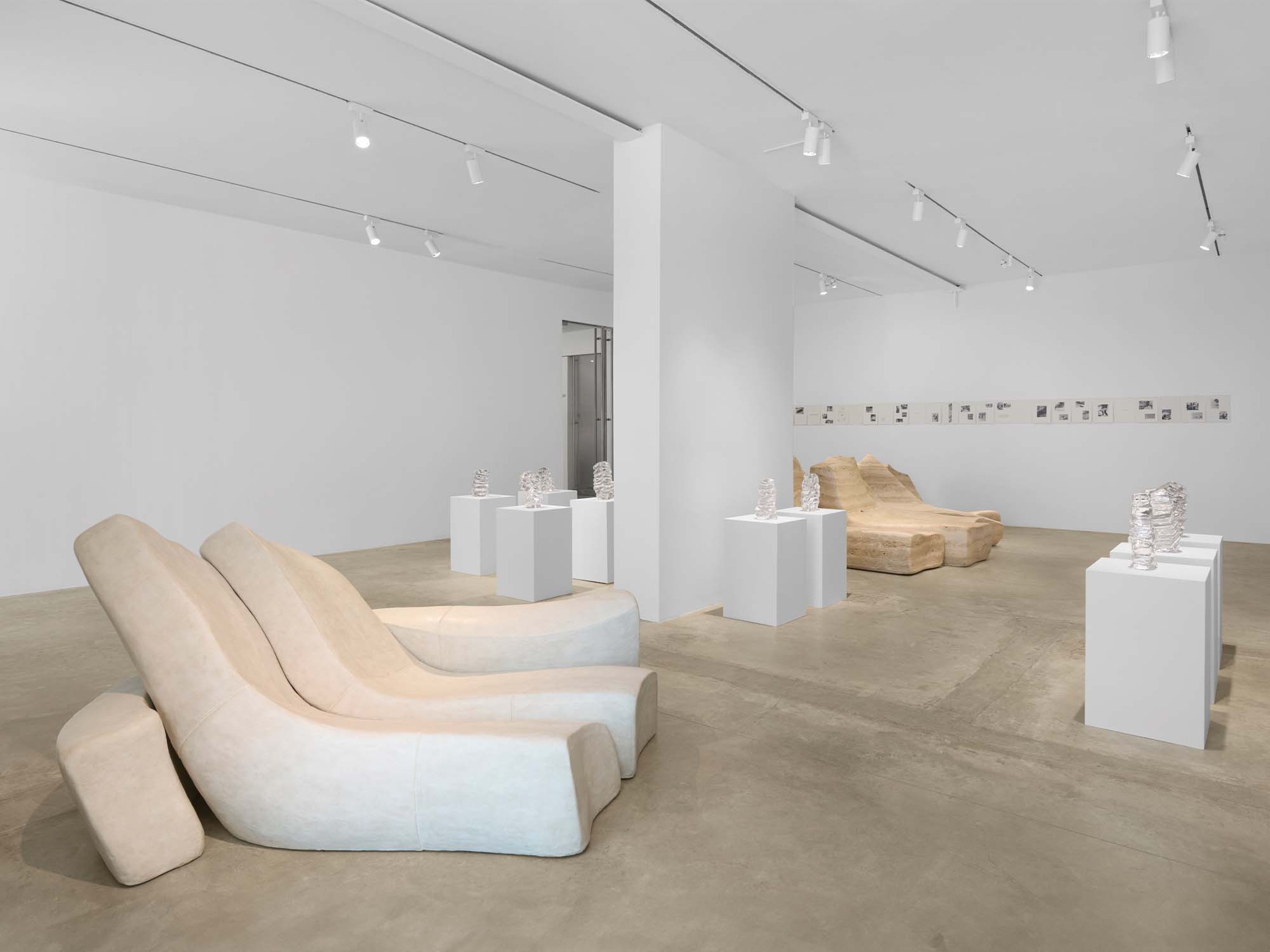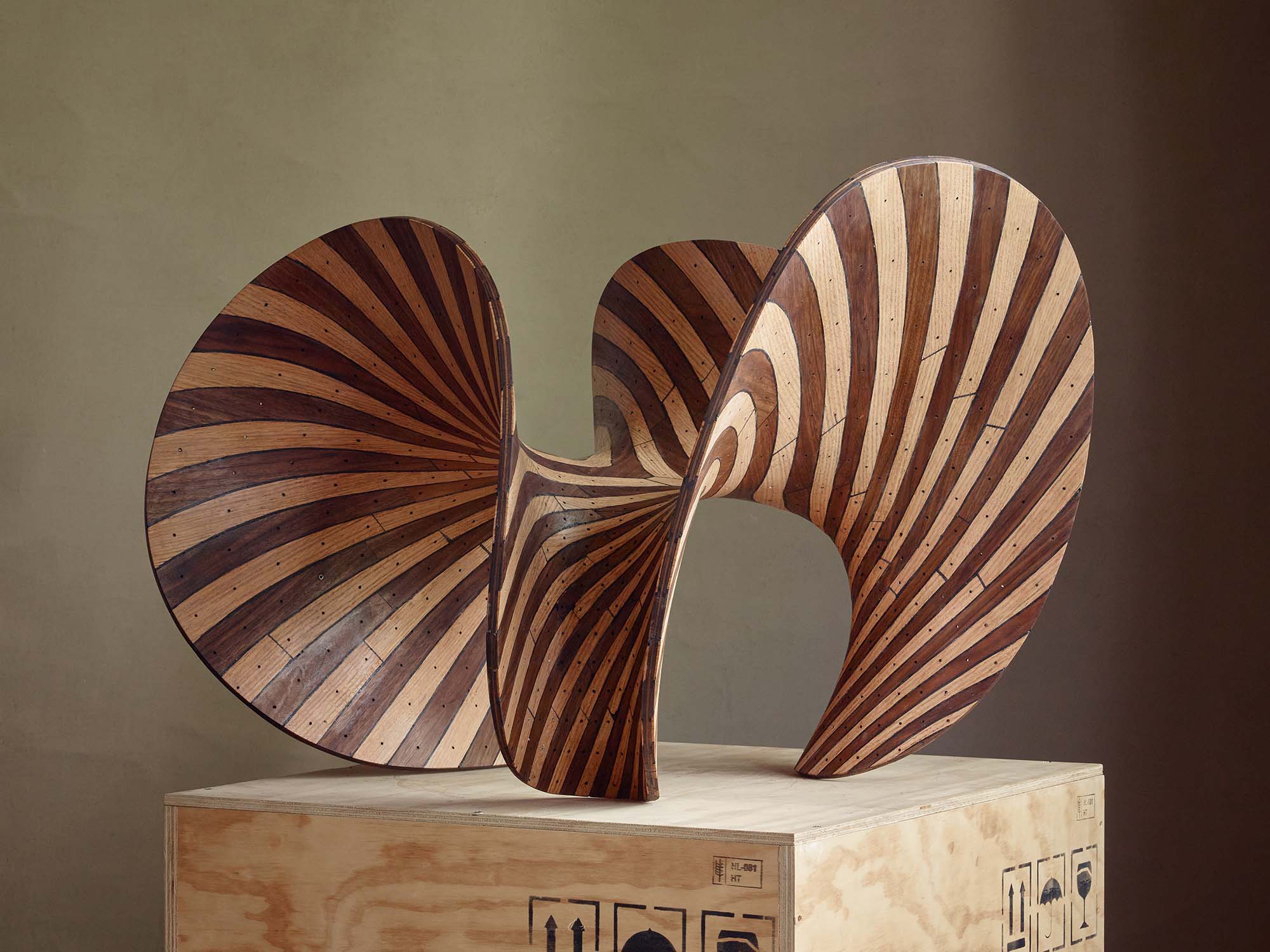By Sofia Lekka Angelopoulou
‘EVERYTHING HERE IS VOLCANIC’ AT FRIEDMAN BENDA
For its ninth annual guest-curated exhibition, Friedman Benda presents ‘Everything Here Is Volcanic’, a show of rare objects that embody Mexico’s explosive contemporary creative energy. On view until February 18, 2023, at its New York City gallery, the exhibition is conceived by independent design curator, editor and researcher About Mario Ballesteros. Its title sparks from a statement by the radical Swiss architect Hannes Meyer, who lived in Mexico for over a decade from 1938 to 1949. ‘The title is a quote from a letter he wrote to a friend and fellow architect, Hans Schmidt only after a few months living in the country,’ Ballesteros tells designboom. Meyer was referring to both the unpredictable geological conditions and the surrounding lava landscape, but also to the challenge of introducing an orthodox modernism in Mexico, a supercharged and superposed culture with deep roots and atemporal deviances. ‘The instability of the geography here —volcanos, earthquakes, etc.— is echoed in the explosive nature of our multilayered culture,’ the curator explains.
‘Everything Here Is Volcanic’ captures the same eruptive energy, featuring new and recent works as well as especially commissioned installations by both established and emerging Mexican artists, designers, architects and makers. The exhibition includes a peculiar take on a traditional vernacular Mexican kitchen by the art/architecture studio Tezontle; a delicate bead chair by Frida Escobedo; a monolithic table by acclaimed artist Pedro Reyes; and a cantilevered mosaic bench by the legendary organic architect Javier Senosiain. ‘The exhibition wants to transport the chaotic, multifarious, supersaturated and superimposed nature of design as practiced now in Mexico, and to make it immediately palpable in a very different context. I hope that the public is surprised and excited, that they get something of the spirit of homegrown resistance to the flattening nature of globalized production, digital media, and clichéd or official narratives of “identity” and ‘mexicanness’ that we want to challenge,’ Ballesteros says. Read our interview with the curator in full below.
INTERVIEW WITH CURATOR MARIO BALLESTEROS
designboom (DB): How did the idea for the exhibition come about, and when did you start working on it?
Mario Ballesteros (MB): In a way, this exhibition has been coming together in the back of my head for the last 10 or 15 years. That is how long I have been thinking about contemporary design in Mexico, and working closely with Mexican designers and artists to understand what makes it tick and what makes it different. I’ve actually been collaborating with many of the artists in the show for years, and have witnessed their own evolution.
The fact that this project finally came to be in the shape of an exhibition in New York City for Friedman Benda is a happy coincidence. Back in the fall of 2020, in the middle of the pandemic, I signed up for a series of online lectures organized by Daniella Ohad on collecting design, where Marc Benda was one of the guest speakers. After his brilliant talk I asked him a couple of questions that picked his interest. We exchanged a few emails and conversations after that, and he invited me to participate in the gallery’s guest curated exhibition series. He had been thinking about Mexico for some time and we agreed it was a good time to embark on an ambitious project like this. We spent about a week in Mexico City visiting artist studios and started working on putting together the exhibition from there.
So, the project has been brought to a hard boil after a long, slow cook ; )
DB: Can you tell us more about the exhibition title and the Hannes Meyer quote that inspired it?
MB: Very few people know that Hannes Meyer came to Mexico in 1939, after fleeing Germany at the start of WW2 and living in the USSR. He ended up staying a whole decade, although he never built any important projects and he wasn’t very active in local field of architectural production at the time. It is mind blowing that such a key figure in the history of modern design managed to live pretty much under the radar in Mexico for such a long time. But it also says a lot about the nature of design culture in Mexico.
The title ‘Everything Here is Volcanic’ is a quote from a letter he wrote to a friend and fellow architect, Hans Schmidt only after a few months living in the country. It is significant because it points to the difficulty —or impossibility— of building a Eurocentric version of “rational modernity” in a place like Mexico. The instability of the geography here —volcanos, earthquakes, etc.— is echoed in the explosive nature of our multilayered culture. I think that premise still stands today, I think it really encapsulates the energy of the show, and it is also a very eloquent but easy way of communicating it nicely to an audience that might know very little about the state of contemporary art or design in Mexico, or the history of material culture in the country.
DB: ‘Everything Here Is Volcanic’ brings together a series of rare objects that embody contemporary Mexican culture. What is your view on the country’s cultural and artistic creativity and production at the moment?
MB: It is truly explosive: diverse, nonconformist, surprising, edgy, rich in references, exceptional in its narrative and material qualities, recognizing its deep roots but also quick to question them or turn them on their head. It is an exciting, significant moment for contemporary Mexican production, that has also been preparing itself for a long time to happen. As I discussed with Marc, the show is not about the ‘potential’ of Mexican design, it is a clear message that we are here, we are ready to flex our creative muscle, and have quite a bit to say.
DB: How did you decide on what objects to include? Have some of the works been commissioned particularly for the exhibition? Where there any specific criteria you were looking for?
MB: Some of common threads that run through the very different perspectives and types of work in the show is that all of the artists and designers are creative misfits in a way: engineers working in fashion (like Bárbara Sánchez Kane), architects obsessed with informality (Andrés Souto), designers queering craft (Aldo Álvarez Tostado) artists mixing ancient culture and branding (SANGREE), or farming and digital fabrication (Fernando Laposse). No one seems to care much for labels, strict categories or fixed identities.
More than a specific generation or particular style of work, I think the constant is diversity of perspectives and positions. The show reveals a resistance to compartmentalization. Not only in terms of professional labels, but also being comfortable with pushing and erasing boundaries between art and design, between function and contemplation, object and idea. That is also something that is very true to Friedman Benda’s own program and identity as a gallery.
DB: What do you hope visitors will take away from the show?
MB: The exhibition wants to transport the chaotic, multifarious, supersaturated and superimposed nature of design as practiced now in Mexico, and to make it immediately palpable in a very different context. I hope that the public is surprised and excited, that they get something of the spirit of homegrown resistance to the flattening nature of globalized production, digital media, and clichéd or official narratives of ‘identity’ and ‘mexicanness’ that we want to challenge. I want them to feel the shake and smell the smoke.
